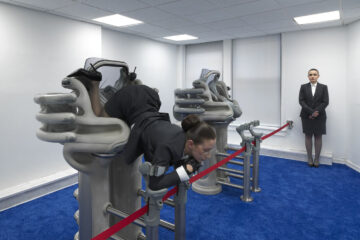
“Forest of Resonating Lamps” is an interactive digital installation by Japanese art collective teamLab.
When a person stands still at close range to a lamp, it changes color and emits a color tone that resonates out. The color of this lamp becomes the starting point, and it spreads to the two nearest lamps.

The light from the lamps, by Murano glass, transmits the same color to other lamps, one after another, spreading out continuously. The light color transmitted from the lamp always changes the color of all the other lamps, and then returns to the first lamp. The light of the lamp in response to human interaction, divides in two, becomes one optical color line through all lamps respectively, finally, meeting at the first lamp that became the starting point.
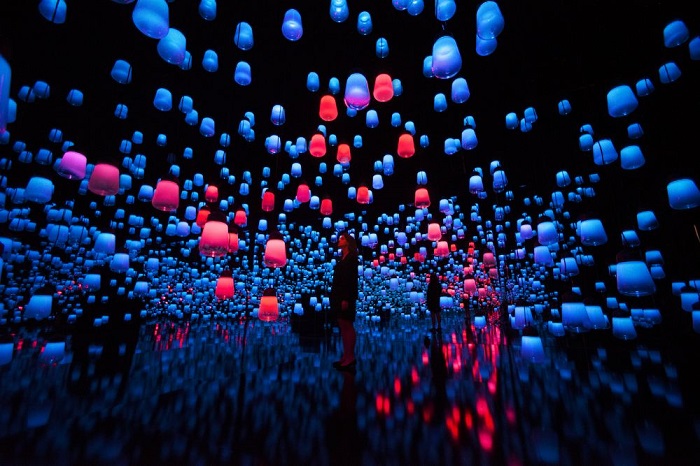
If a light comes from the other side of the room, it means that there is someone else standing there. Visitors become aware of the presence of others in the same space.
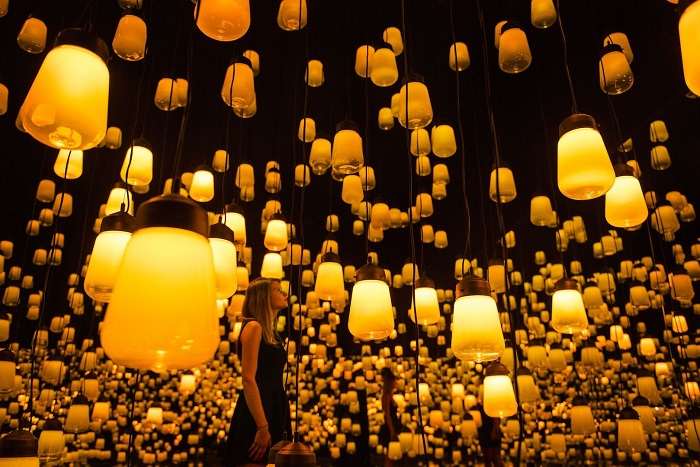
The planar arrangement of the lamps is staggered in a zigzag to fill a space, organized by a perfectly ordered grid. This is the first constraint. The second constraint is the height and width of the room and the pathway that people walk through, thus creating a “boundary condition.” The third constraint is that the lamps, when connected to the two closest lamps three-dimensionally, form a unicursal pattern with the same start and end points. The placement of lights was mathematically calculated so that it satisfies these constraints.
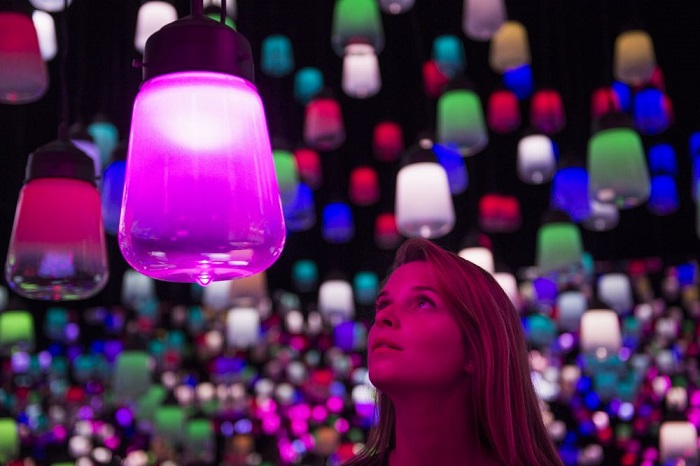
The arrangement of the lamps is not only beautiful in a static way, but also in a dynamic way when activated by viewers. It demonstrates the space of a new era. The space is designed through digital technology and adapts to the movement of the people in it.
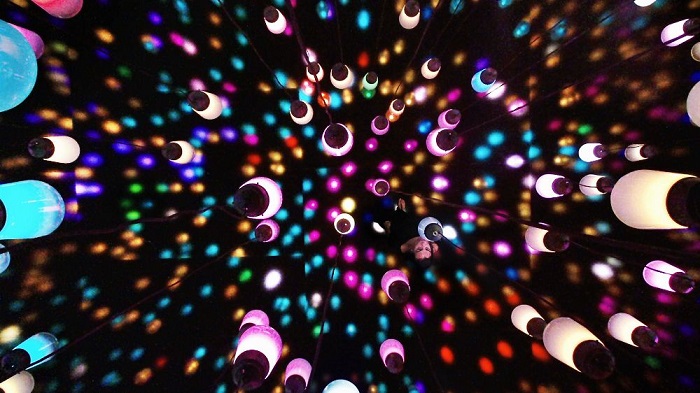
Images courtesy of teamLab
Discover: www.team-lab.net
More about teamLab on the PhotoPhore: www.thephotophore.com/floating-flower-garden-team-lab



